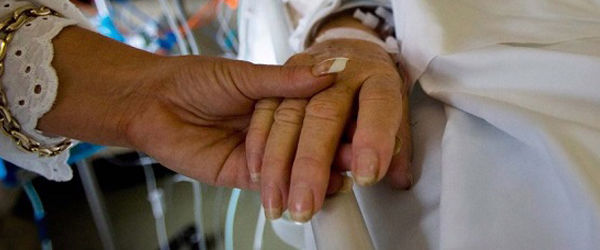“As Catholics, the work of reconciliation is what we embrace,” notes Claretian Father Bruce Wellems, pastor of San Gabriel Mission. “It is good to forgive and to acknowledge, yet the majority of our energy has to go to reconciliation. That is what is important.”“The Mission Play, 2013” — being presented April 5-7 at the Mission Playhouse adjacent to San Gabriel Mission — is an on opportunity to approach this work, to acknowledge the struggle of culture, exemplified by the meeting of cultures in the establishment of California’s missions. The story of “The Mission Play” began in 1901 when attorney John Steven McGroarty moved from Pennsylvania to Los Angeles to become a reporter and write columns for the Los Angeles Times, a post he kept for 40 years. A poet and a man of faith, McGroarty — while visiting Frank A. Miller, California visionary and founder of Riverside — received the inspiration for “The Mission Play.” Standing on Mount Rubidoux, in Riverside, in the shadow of a cross erected to the memory of Father Junípero Serra, McGroarty and Miller were moved to write and produce a play about Father Serra’s missionary work to the natives of California. Miller, a Congregationalist, became a major financial contributor to the production, along with railroad baron Henry P. Huntington and Los Angeles Times mogul Henry Chandler. The original three-hour play — opening in 1911 on the grounds outside Mission San Gabriel Archangel — was seen by over 2.5 million people over a span of 20 years, with 3,198 performances. From 1922 to 1927, the Mission Playhouse was constructed adjacent to the San Gabriel Mission, to house the play. The playhouse’s architecture and design motif reflects Spanish, Native-American and Californian Culture; its fa√ßade was designed to resemble McGroarty’s favorite mission, San Antonio de Padua near Monterey. For the playhouse’s opening in March 1927, King Alfonso XIII of Spain sent ten beautifully woven tapestries depicting Spanish provinces that still adorn the playhouse walls. McGroarty (whose success as an author led to a short career as a U.S. Congressman, 1935-39) and Miller had a great appreciation for the history of California and also for the Catholic contribution. The Spanish Missionaries came to educate and evangelize the Native Californians. The settlers introduced European crops, fruits, cattle, horses and ranching into the California region, but the Spanish occupation also brought disease and a clash of culture. “The Spanish culture and the Native American culture met, but it was the Native American culture that lost,” says Father Wellems.As part of the City of San Gabriel’s Centennial celebration, the Mission Playhouse is producing a 2013 adaptation of “The Mission Play.” This re-imagined version creatively addresses the different points of view.Writer/director Jonathan Salisbury has taken great care in involving the living story of the greater community in the current script. With Gabrieleno-Tongva Native-Americans, Chinese, Spanish, Catholic, Protestant and Buddhist members, among others, the cast itself is ethnically and religiously diverse. Noting that McGroarty wrote the Mission Play when he was a Protestant and later converted to Catholicism, Salisbury says he has consulted with Catholic priests on production details and apologetic themes. “The Mission Play Re-imagined,” respectfully addresses the meeting of cultures in present-day California and also the best and worst of their meeting in the past. In some ways, the new production is a complex reading of history from a modern perspective. It also encompasses a perspective of faith. Newly-elected Pope Francis recently spoke of such context on March 16: “Historical events almost always require a complex reading that, at times, can also include the dimension of faith.”“The Mission Play, 2013” addresses the plight of the Native American Californian, while at the same time presenting a moving story about faith, passion and forgiveness, says Anna Cross, Mission Playhouse director and producer of the play. “The story positively touches on Christian themes of evangelization, sacramental rites, prayer, grace and repentance,” she says.“This play speaks to how we address what is imposed on us by other people,” adds Father Willems. “When we take time to listen to one another, we need to ask, ‘What is meaningful to you? What matters to you in your experience of community life?’ The play introduces a dialogue about listening and recognizing the other’s needs.”In particular, he points out, “We have an obligation to assist in the preservation of their culture. The Gabrieleno-Tongva Native American Tribes participate at the San Gabriel Mission by conducting workshops on Native American culture. We want to think more about how to recognize Native American culture in our local and state history.”In listening to each other, says Father Willems, “we find our hope. We can’t always solve things right away. But, the listening itself is important. I think the historical struggle of the Native American can motivate us to listen to one another. ‘The Mission Play’ helps us to discover the work of reconciliation.” “The Mission Play, 2013” will be presented at 8 p.m. April 5-6, and 2 p.m. April 6-7 at the San Gabriel Mission Playhouse, 320 S. Mission Dr., San Gabriel. There will be pre-show fiestas in front of the Mission Playhouse during the hour before each performance. For information and possible ticket discounts, call (626) 308-2868, or visit www.missionplay.org.{gallery width=100 height=100}gallery/2013/0329/missionplay/{/gallery}

